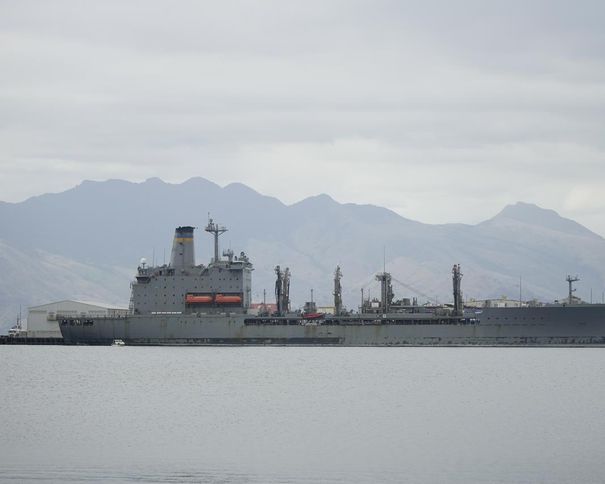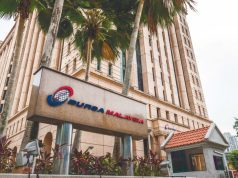More than 30 years after the closure of its sizable bases there, the US has been taking steps to rebuild its military power in the Philippines. It has also been fortifying an arc of military alliances in Asia in the starkly different post-Cold War era where the perceived new regional threat is an increasingly aggressive China.
On February 2, the longtime allies announced that rotating batches of American forces would be allowed access to four more Philippine military camps in addition to five other local bases. Under a 2014 defense agreement, US-funded constructions have accelerated to build barracks, warehouses, and other buildings to accommodate an as-yet-unspecified but anticipated sizable number of visiting troops.
The location of the Philippine camps, according to Manila-based political scientist Andrea Chloe Wong, would give the US military the presence it would need to be a “strong deterrent against Chinese aggression” in the South China Sea, where China, the Philippines, and four other governments have had increasingly tense territorial rifts. Beijing also views Taiwan as its own territory that should be brought under Chinese control, by force if necessary.
News of the Philippine government’s decision to permit an expanded American military presence in the area around the former US Navy base in Subic, which is now a thriving commercial freeport and tourist destination northwest of Manila, brought back memories of a time when thousands of US sailors injected money, life, and hope into the nearby city of Olongapo.
During his recent visit to Manila, US Defense Secretary Lloyd Austin stated that although Washington was not attempting to reestablish permanent bases, the agreement to increase its military presence under the Enhanced Defense Cooperation Agreement was “a major issue.”
According to Austin and his Philippine counterpart Carlito Galvez Jr., visiting American military personnel might include the Philippine military in greater joint combat-readiness exercises, assist in providing quick disaster relief, and push efforts to support modernizing Manila’s armed forces.
At a news conference in Manila, Austin said, “This is part of our commitment to modernize our alliance, and these efforts are especially vital as the People’s Republic of China continues to pursue its unlawful claims in the West Philippine Sea.”
The US military’s expansion in the region, according to a spokesman for the Chinese Foreign Ministry named Mao Ning, is raising tensions and endangering peace and stability.
At a press event in Beijing on February 2, Mao warned reporters, “Regional countries need to be watchful and avoid being bullied or manipulated by the US.”
The four new places where the Americans would be given access and permitted to preposition weapons and other equipment were kept a secret by Austin and Galvez. Local authorities needed to be engaged, according to the defense commander of the Philippines, where the Americans would stay.
Rolen Paulino, the administrator of Subic Freeport, claimed that the government has not informed him that the former US naval post has been flagged as a prospective location for incoming US forces.
However, Paulino noted that a reactivated US military presence at Subic would increase employment and boost freeport income at a critical time when many Filipinos and companies are still working to recover from two years of Covid-19 lockdowns and a recession brought on by coronavirus outbreaks.
Regarding the US forces, whose presence could contribute in the rehabilitation of the economy, he remarked, “I regard them as tourists.”
The Philippine Constitution forbids foreign forces from establishing permanent bases there or engaging in local fighting, but it does permit them to temporarily enter the nation under security agreements like the 2014 Enhanced Defense Cooperation Agreement and a 1998 Visiting Forces Agreement.
The 1998 agreement permitted the deployment of numerous American forces in the southern Philippines to support Filipino forces fighting the group Abu Sayyaf, which was linked to al-Qaeda at the time and was accused of carrying out deadly bombings and mass kidnappings for ransom, including three Americans, one of whom was beheaded and another shot and killed in a Philippine army rescue. The third one made it.
The shooting of a Filipina transgender woman by a US Marine in 2014, which left-wing organizations have denounced as neo-colonialism, has only increased internal hostility to the US presence in the Philippines, according to Wong.
Bacarro claimed that the US has allegedly requested access for its forces in two local military encampments. The governor of the northern Cagayan province, Manuel Mamba, has vowed to oppose such an American military presence. Cagayan, which is situated on the northernmost point of the main Luzon island, is separated from Taiwan, the Taiwan Strait, and southern China by a slender sea boundary.
“It will be extremely risky for us. The Philippines could be targeted by nuclear weapons if the conflict over Taiwan escalates, Mamba told the AP over the phone. “If they stay here, whoever is their enemy will become our enemy,” he added.
“Through the Americans who will be present, you can’t really dispel anyone’s assumption that the Philippines has nuclear capabilities, Mamba added.















